Artists: Ludmila Belova, Peter Belyi, Ivan Govorkov and Elena Gubanova, Alexandra Dementieva, Marina Koldobskaya, Vitaly Pushnitsky, Alexander Terebenin, Anna Frants, Anton Chumak, Petr Shvetsov
Ludmila Belova, The Compelled Foreshortening
Video installation, 2005
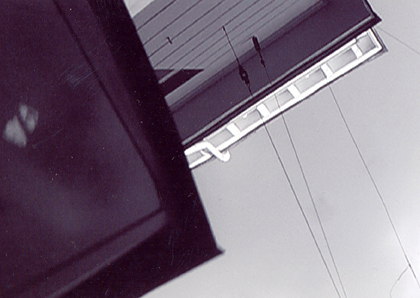
The artist conceptualizes the possibility and impossibility of freedom by simulating a baby’s view from the stroller with a camera. In all its seeming simplicity the work refers to the classics of Soviet avant-garde: Rodchenko’s angles and Eisenstein’s films.
http://www.ludmilabelova.com/
Peter Belyi, Unnecessary Alphabet
Installation, 2007
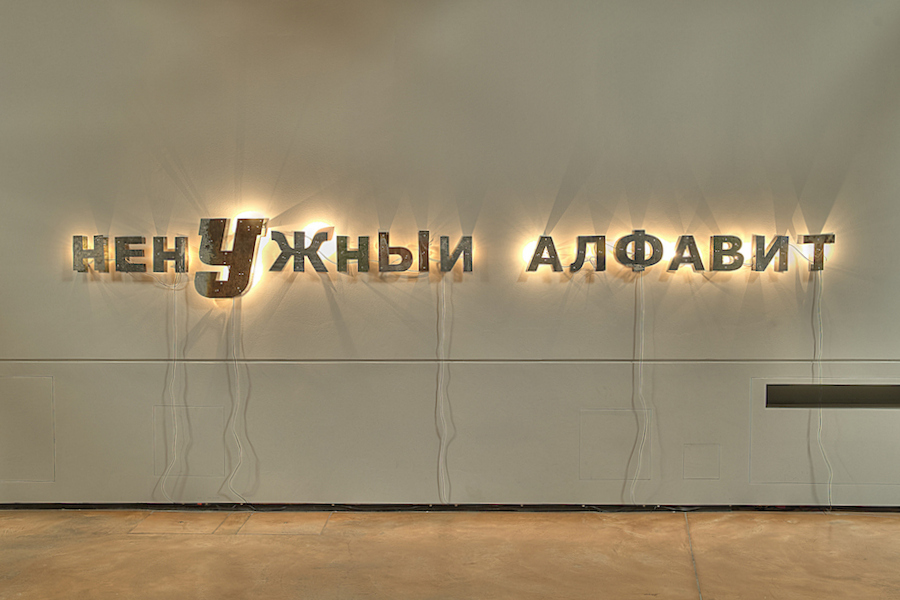
This work uses the archaic aesthetics of outdoors advertising of 1960-80s to reconstruct the bygone Soviet reality. The LEDs highlighting the rusty tin may seem to be the symbol of light at the end of the tunnel, but it is not a flash of hope, it is an assertion of total solitude. The Russian language used in the installation puts emphasis on the individual nature of a private story and its inscrutability for others.
http://peterbelyi.com/installations
Elena Gubanova and Ivan Govorkov, Generations
Installation, 2013
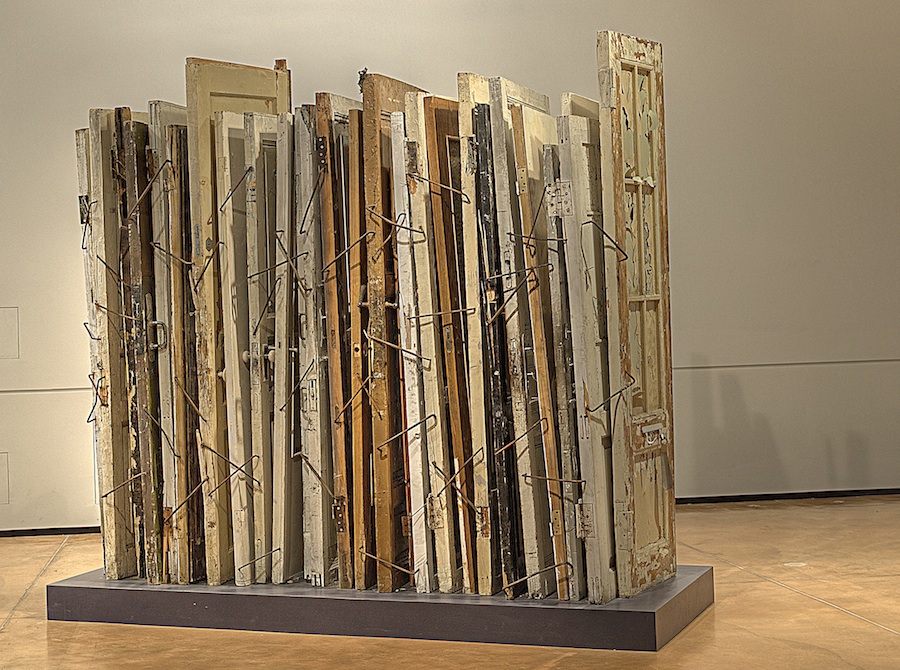
For Generations artists sought doors of different eras in St. Petersburg and combined them into a vivid conceptual composition of time and identity.
The installation was passed into the collection of Ca Foscari Universita, Venice, Italy, after the exhibition.
http://elenagubanova.com
Elena Gubanova and Ivan Govorkov, Filtration of White Noise
Installation, 2011

In this video installation, the image is interactively connected with the viewer’s movements. When a person walks into a room, he gets inside the video projection of white noise (a physical term used in astronomy; also used figuratively to describe constant noise) filling the walls. There is a mini stair stepper in the center of the room – a metaphor for ascension. Making an effort walking the stair stepper the spectator changes the projected image: vague noise turns into luminescent silhouettes of flying seagulls filling the space with their cries.
http://elenagubanova.com
Alexandra Dementieva, Breathless
Installation, 2012
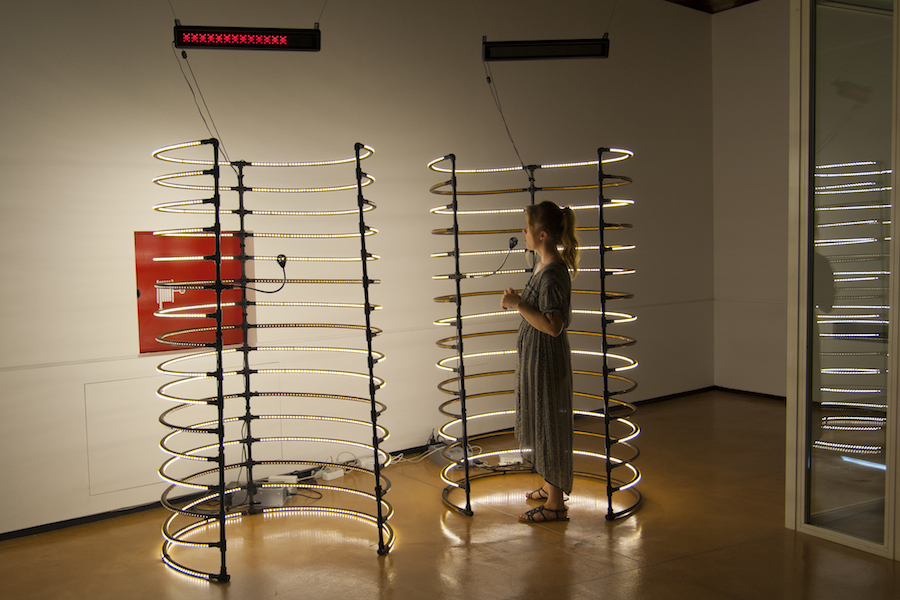
The installation consists of three light objects. Two of them are connected to the RSS feeds via computers while the third transmits atmospheric data of the place. Computer searches RSS feeds for everything related to the concept of fear for the first object and the concept of desire for the second one. The more connections there are, the brighter the LEDs shine. The third object is based on the same principle but it uses the atmospheric data of the place.
A spectator can get into the constructions that have additional air pressure sensors. When he blows in them, the lighting of the object changes thus visualizing the simple act of breathing and its importance.
http://www.alexdementieva.org/
Marina Koldobskaya, Roman Holiday
Painted objects, 2008–13
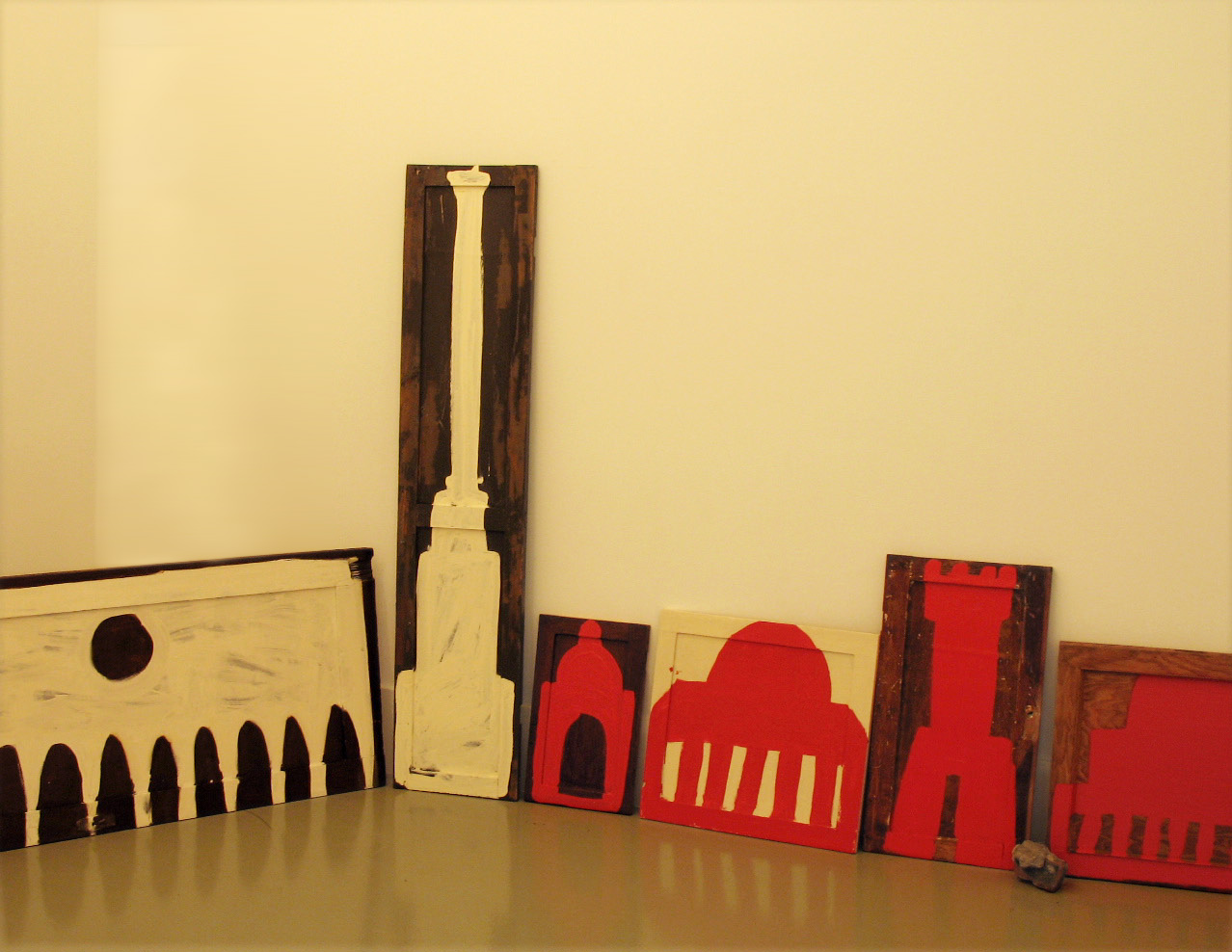
Old furniture doors of various sizes are painted with different architectural structures – arches, columns, temples, houses. Together they form a city assembled from modules that start a game of scale – the ‘buildings’ seem to be ‘erected’ now near, now far from the spectator. Minimalist execution (the outline of the buildings is painted with one stroke of the brush, so that the buildings are perceived as a whole) makes the nuances of color and line particularly important. The austere and dignified simplicity of elemental forms defines the no man’s character of this architecture that traces back to the world of Platonic ideas. The long-present classic architectural forms show us not the temporary values prone to historical recession, but the eternal and timeless ones.
http://marinakoldobskaya.com/
Marina Koldobskaya, Variable Landscape
Video installation, 2013
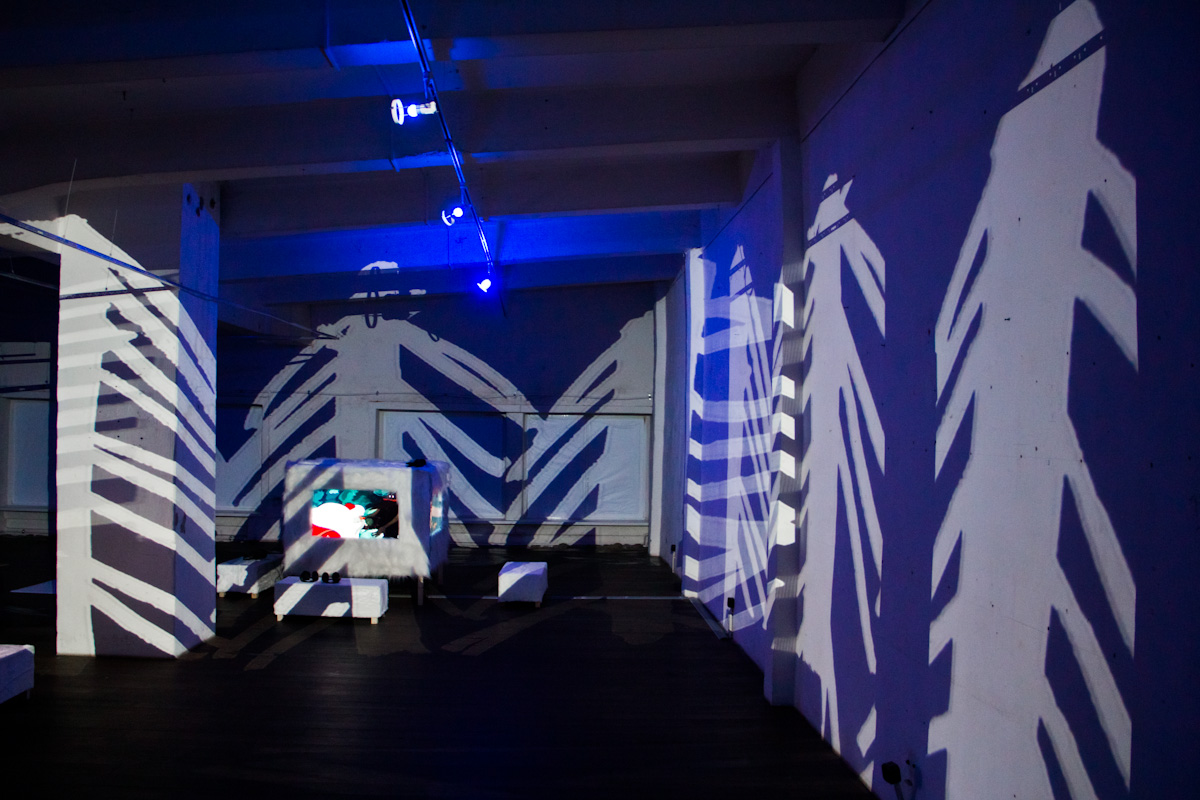
Several video projections covering the space of the exhibition hall replace each other in a slow mesmerizing rhythm: glowing waves, stars, spirals, flowers, snowflakes and just dots, doodles, blots and zigzags. Dozens of glowing primary elements form mysterious spaces, filled yet empty, like the earth and sky on the first days of Creation.
http://marinakoldobskaya.com/
Vitaly Pushnitsky, Anticipation
Video installation, 2013
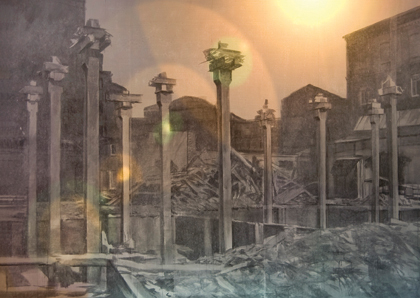
Large-scale monochromatic drawing represents an abandoned construction site, reminding of ruins of an ancient city. A video is projected on the picture: it shows a daycycle – sunrise, noon, sunset, stellar motion. Everlasting circulation of the cosmos over futility of human efforts.
http://www.pushnitsky.ru/
Alexander Terebenin, Skyline
Video installation, 2009
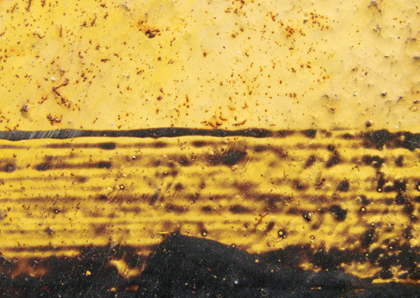
Skyline is based on a number of photos representing walls of St Petersburg buildings. Traces of paint, plaster and rust on peeling walls form dramatic landscapes – without houses, without trees, without people, empty plain areas, the Earth before Adam or after a global disaster.
Anna Frants, Cloud That Smelled Blue
Installation, 2011
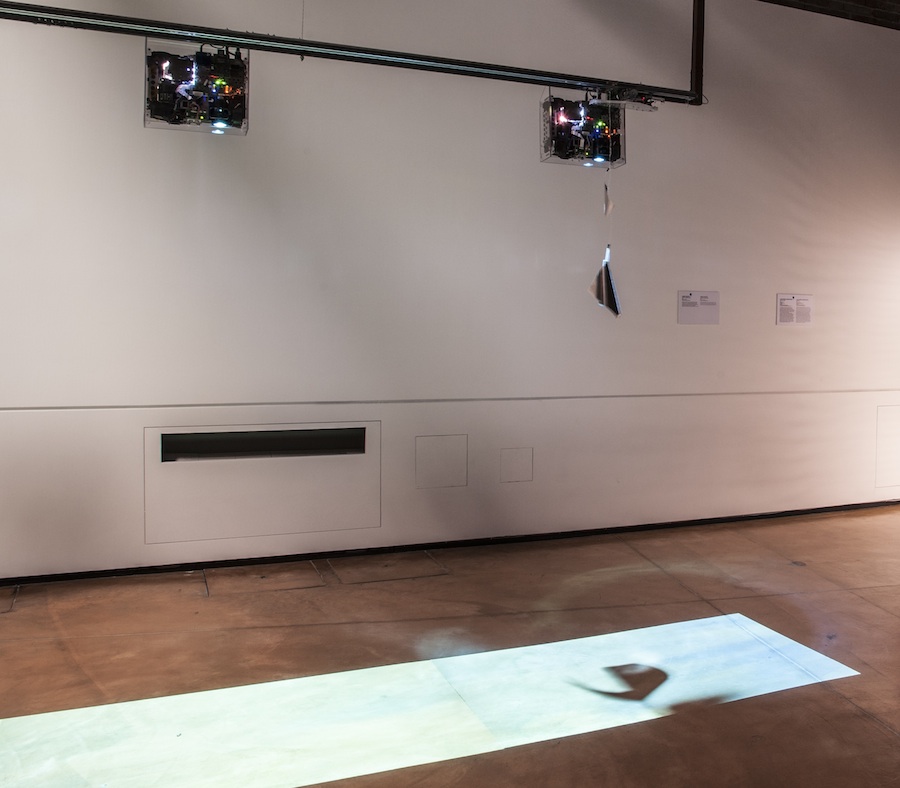
This work is а large-scale installation that is crossing boundaries between art, design and cinema. Like all of Anna Frants’ works, this installation is part fantasy and part instinctive immersion bound by programming and robotics.
http://annafrants.net/
Anna Frants, Made in Ancient Greece
Installation, 2007–13
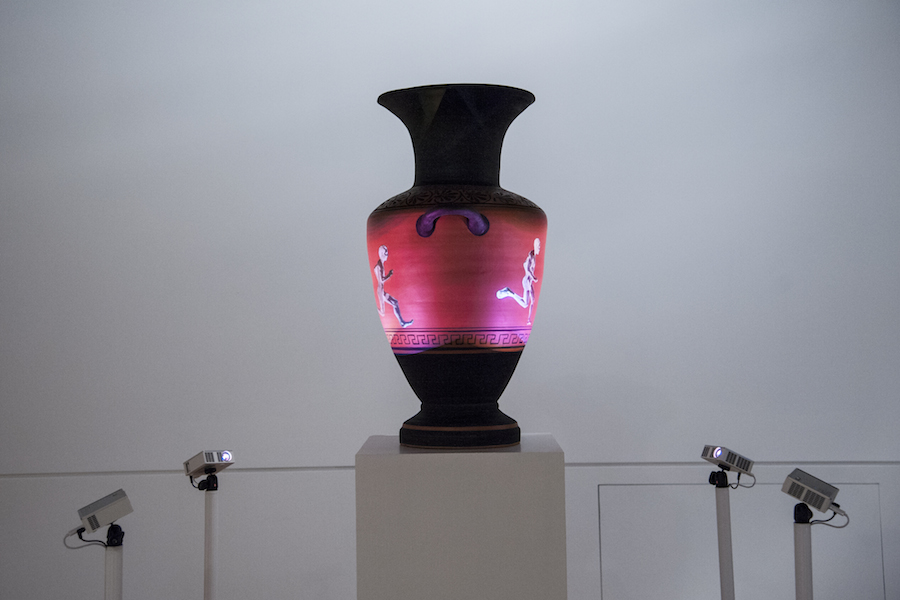
In the series Made in Ancient Greece classical clay vessels continue to tell stories by contemporary visual means, but instead of paint the artist uses video. Ridiculing culture clichés, such as the idea of perfect proportions of ancient Greek fine pottery, she proves that an object from the past can be a great vehicle for a narrative about the present.
http://annafrants.net/
Petr Shvetsov, Tanya
Installation, 2013
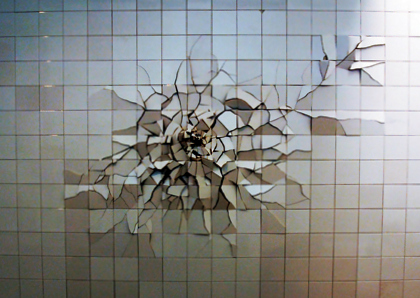
The name was chosen to remind of female names given to hurricanes. Breaking a tile wall Petr Shvetsov acts like an irrational storm. He just marks the action of the natural force with expressive check cracks or a brutal gesture which shows evanescence of an illusive well-being, and that is enough for the artist. Petr Shvetsov is attracted to simple objects and events by their expressive texture that enable him to work beyond stereotypes.
http://shvetsov.info/